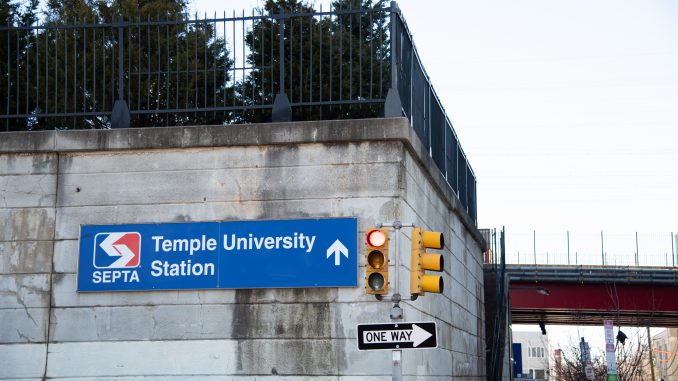

Before coming to Temple University, I toured the campus several times and although each tour was different, each time I heard about how access to the rest of the city sculpted Temple students’ college experiences.
This common motif was the driving force in my decision to come here.
Accessibility to the rest of Philadelphia is beneficial to students for many reasons, whether it be jobs, internships or access to classes at the Center City and Health Science campuses.
Nevertheless, convenient access to the city is not free.
With pressing issues like student loans, housing and food insecurity, it is hard enough for students to live comfortably at college. Considering the financial burden public transit poses on students commuting, Temple should work to offer free public transportation for students.
“The levels of students who are struggling to get to Temple are very much in line with those who are facing struggles with housing or food insecurity,” said Kate Lyons, a senior geology major and Temple Student Government’s director of grounds and sustainability. “That’s a big part of your education, how you’re getting to and from Temple and how accessible that is.”
One fare on the SEPTA subway system costs $2.50, or $2 for SEPTA key card holders, leading to a round-trip cost of $4-5. While one trip might not seem too expensive, commuting to and from campus five days a week could cost students $20-25.
The Regional Rail train system, which extends out of city limits, ranges from $4.45 to $10 depending on the zone, according to SEPTA’s website.
Temple nursing students, for example, are required to take classes at the Health Sciences Campus, and even though there is a free bus, it only runs between 9:30 a.m. and 11:10 p.m. Students with 8 a.m. classes have to take the subway.
“It’s frustrating having to pay around $30 a semester for a class I am required to take for my major,” said Dyamond Jones, a freshman nursing major. “I just think each campus has different resources and it would definitely be beneficial to have free transportation across the city.”
Many other city-based colleges already provide free public transportation to their students.
For example, students at the University of Pittsburgh, Carnegie Mellon University and Chatham University are granted fare-free rides on public transit throughout Allegheny County because of the schools’ collaboration with Port Authority Transit, a public transportation company in Pittsburgh, according to the Port Authority website.
Temple does not offer a form of free, universal transit like these other schools. Instead, Temple promotes their semester pass, with five different options ranging from $346.56 to $736.44, depending on the forms of transportation.
While Temple does offer this SEPTA University Pass, it only encompasses a 10 percent discount overall. This is not enough for students who regularly use public transportation.
“It’s great that we have that, but it’s still not extremely affordable,” Lyons said.
By making public transit free for students, the university could achieve its goal to increase the number of students using sustainable forms of transportation by 75 percent before 2025, which is one of the aims included in Temple’s 2019 Climate Action Plan.
“The Office of Sustainability wants students thinking about their impact and how they can mitigate their carbon footprint, or at least reduce it, and transportation is one of the big ways that you can think about your impact,” said Rebecca Collins, the director of sustainability at the Office of Sustainability.
“We want people out of carbon-intensive forms of transportation and taking things that are lower emissions,” Collins added.
While sustainable, this initiative would also ease financial burdens for students.
The cost of public transportation directly targets students from low-income communities who cannot afford to take the subway into Center City every day for an internship or a job.
In fact, students from low-income households are impacted the most by the cost of public transportation, but the least likely to have other travel options, like ride-sharing or a car, according to a 2019 report by the Washington Metropolitan Area Transit Authority.
Providing free transportation across the city would give all students more opportunities to make the most of their time at Temple.
“What I and the task force would really like to see is Temple really working towards that goal of getting students on public transit for as affordable as possible and getting them to school and their internships and their jobs as affordable as possible,” Lyons added.


Be the first to comment